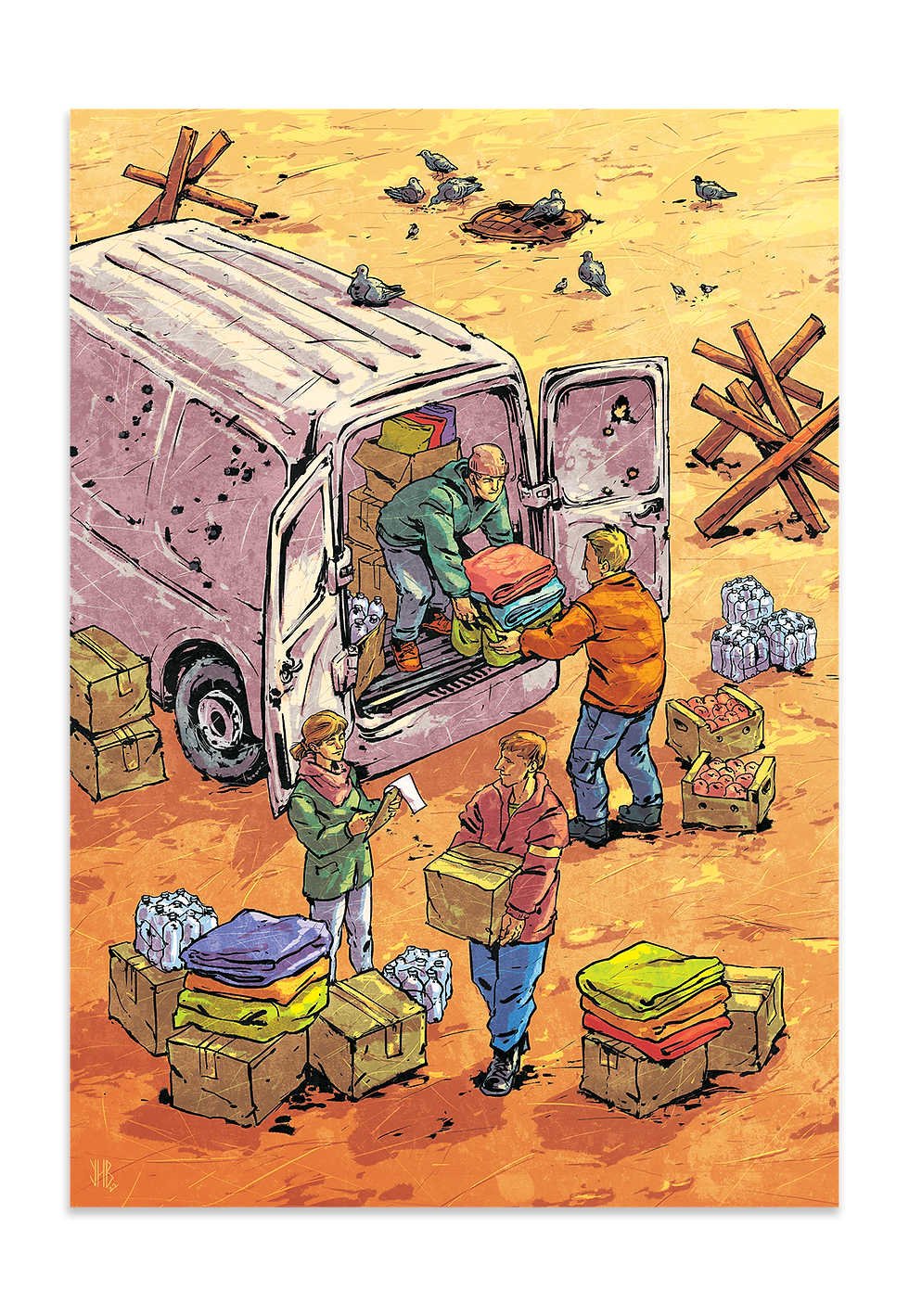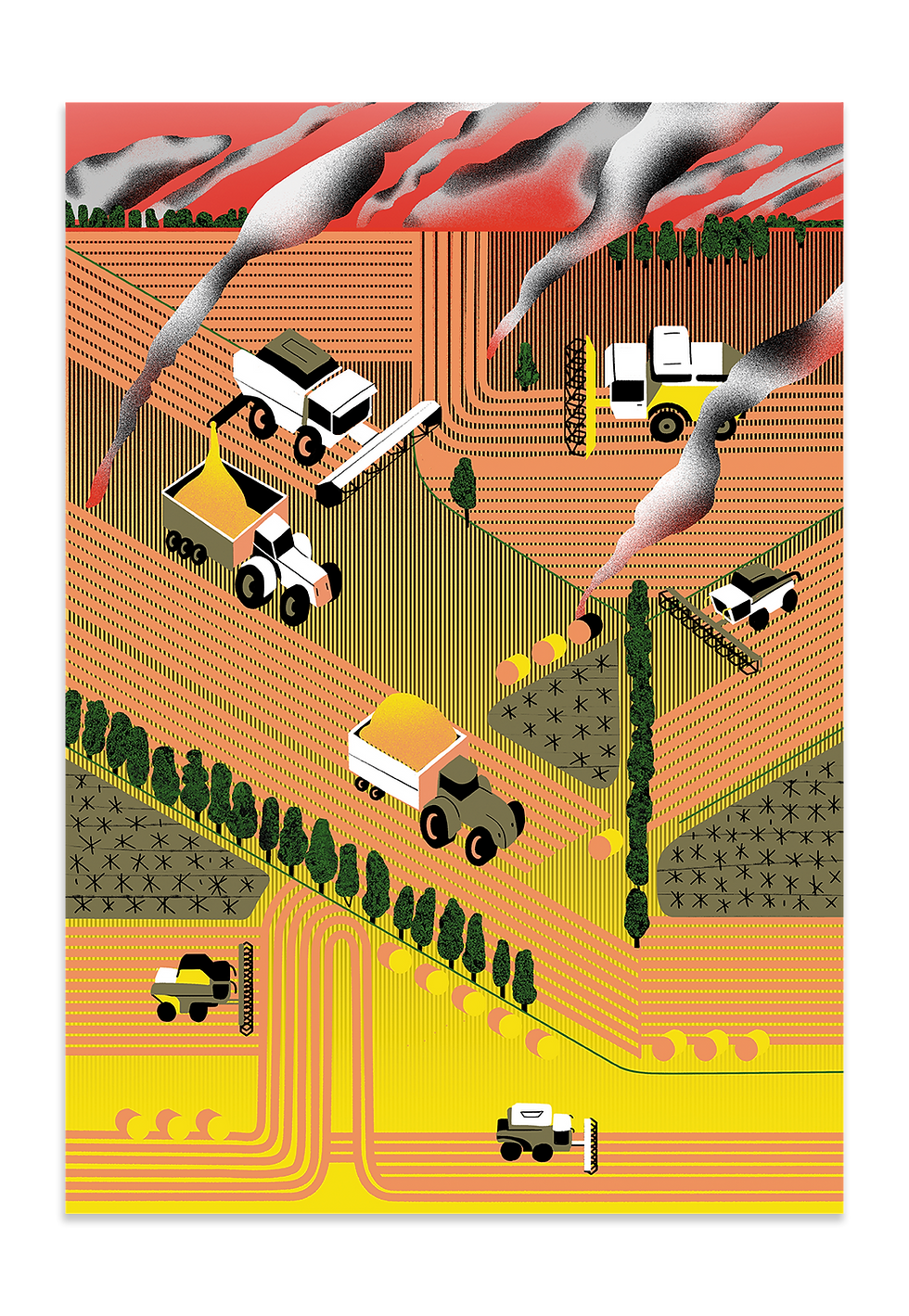Tylova Bryhada (Rear Brigade) makes periscopes with 3D printing
- Pictoric

- Mar 18, 2024
- 2 min read
Illustration: #RomanaRuban

//
A periscope is a simple but vital military device that allows a soldier to safely observe the enemy from hiding. In the early days of the full-scale war, volunteers called on anyone with a 3D printer to help the military and make a variety of items: Israeli bandages, drone parts, kits for the fast loading of magazines, and periscopes.
Denys responded to this call, because the man had been teaching children at the Kremenchuk school to work with a 3D printer for several years, and he also fulfilled private orders with two printers at home.
Lviv volunteers provided Denys with plastic, and the man with his wife began creating periscopes in their garage. The master significantly improved the proposed model in order to make more periscopes from less materials. The work is simple: two plastic corners are 3d printed, attached to an ordinary sewer pipe, equipped with two mirrors and finally secured with plastic ties. For camouflage, the product is painted in a camouflage pixel, and an anti-reflective mesh is installed on the mirror so that the periscope doesn’t betray the soldier to an enemy sniper in sunny weather. The weight of one periscope is from 100 to 200 grams, depending on the size. The cost is about 100 hryvnas (about 2,5 dollars), at least three times cheaper than at large productions. However, Denys gives all the devices to the army absolutely free of charge.
Denys is not the only one who prints and collects periscopes for the Armed Forces. A whole Rear Brigade of volunteers from Kremenchuk, Kyiv, Vinnytsia and Kropyvnytskyi has already gathered. In three months, the brigade handed over 2,500 periscopes to the front line. Military personnel constantly share their wishes regarding the improvement of products, so Denys listens carefully to adjustments.
For example, an adapter for a monocular or a thermal imager is now being 3D printed for periscopes. Thanks to this, defenders can attach night vision and the proximity function.







Comments